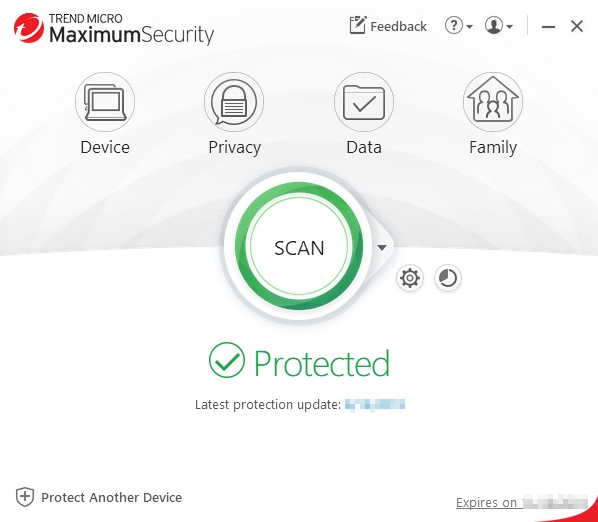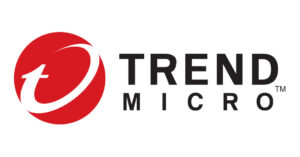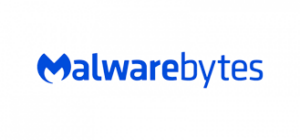Trend Micro challenges the mighty Norton for real-time threat protection, and it does it at a better price, too.
Trend Micro antivirus review
In our best antivirus software breakdown, it was a fight between Bitdefender and Norton for the top position. But Trend Micro is another threat-annihilating contender that’s well worth considering, more so now that Bitdefender has dropped its perfect threat-protection scores in recent real-world tests. Trend Micro doesn’t really compete on price with other antivirus providers (including Bitdefender), but it is cheaper than Norton.
Trend Micro price
In every comparable category against seven other popular antivirus services, Trend Micro doesn’t take out the top spot for cheapest first-year pricing or ongoing fees. Looking at the pricing structure on the Trend Micro website, you’ll see four options, with first-year prices starting at $49.95 for one device and stretching up to $298 for 10 devices on the priciest package.
Speaking of packages, Trend Micro offers four, and they’re all relatively straightforward. Trend Micro Maximum Security is the first, costing $49.95 to protect one Windows, MacOS, Android, iOS, or Chrome OS device before reverting to its typical $69.95 annual fee. From there, things get more complicated.
Trend Micro Device Security Basic starts at $69 for two devices but supports up to six, while Device Security Pro costs $89 for the first year to protect three devices (six and 10 also available). Finally, Device Security Ultimate starts with a $228 first-year fee to protect three devices (six and 10 also available). Certain Trend Micro plans charge extra for additional support features, which isn’t ideal. You can pay with major credit cards or PayPal.
During my sign-up tests, auto-renewal was enabled by default, seemingly with no way to disable it. Set a calendar reminder if you don’t want to be stung with an unintentional renewal fee.
Trend Micro features
All four versions of Trend Micro antivirus support Windows, Mac, Android, iOS, and Chrome OS, but Device Security Ultimate also supports certain smart devices. The addition of Chrome OS (Malwarebytes also supports Chrome OS) and smart device support is a nice nonstandard inclusion.
Across Trend Micro packages, you’ll receive these inclusions:
- Antivirus, malware, ransomware, and spyware protection
- Parental controls
- Password protection and management
Stepping from the confusingly named entry-level Trend Micro Maximum Security to Trend Micro Device Security Basic, you also get dark web monitoring. Paying more for Trend Micro Device Security Pro adds virtual private network (VPN) functionality as well as 24/7 tech support. For reference, 24/7 tech support is the norm for popular antivirus services without paying extra. Finally, Trend Micro Device Security Ultimate also includes an IT helpdesk as well as protection for smart devices.
Trend Micro sign-up and setup process
Four options is pretty tame compared to other antivirus competitors, but be prepared to pay more for Trend Micro products based on how many devices you want. Once you’ve found the version you want, signing up, paying, and downloading Trend Micro is all straightforward.
For my tests, I bought a two-device version of Trend Micro Device Security Basic to test on Windows and Android. The Android version lets you try Trend Micro for free; alternatively, you can use credentials or an activation code to log in. For my tests, it prompted me for an account as well as the activation code, so you’re better off creating an account instead of having to double-up.
On Windows, the installer guides you through the relevant steps, asking whether you want to input an activation code or use a free trial. During installation, you’ll also be prompted to install the free Trend Micro password manager. After a quick additional download within the installer, Trend Micro should do the rest without input or hassles. That is, unless, you have incompatible antivirus software, as I did with Spybot – Search & Destroy, which is something other antivirus programs don’t tend to flag.
Admittedly, Trend Micro did automatically uninstall the incompatible software. Overall, installation isn’t particularly speedy, unlike most antivirus competitors, so go make a coffee while it does its thing. You’ll know it’s done when the installer offers to send a monthly email report to keep you up to date with your security status and then prompts you to create a user account.
Trend Micro user experience
On Windows, Trend Micro encourages you to install the Trend Micro Toolbar, which protects against threats and scams, plus it safeguards financial transactions. As for the main software, there’s a longer tutorial if you want it or you can click through the basics the first time you open it up.
Tap the big main scan button for a quick scan, which should finish in a couple of minutes. Alternatively, hover over the down arrow to choose a full scan or create a custom scan. Optionally, you can choose to shut the computer down after it’s done if you’re logging off for the day. The scan offers an analysis of threats and device optimisation.
Back on the main screen, there are four tabs to click through. The Device tab lets you configure, enable, or disable real-time scanning, web filtering, PC optimisation, and even a neat feature called Mute Mode that stops non-critical notifications. Privacy is where you’ll find social network, transaction protection, and other privacy settings, included data-theft prevention, which is off by default.
The Data tab lets you protect folders from ransomware, plus there’s also a digital shredder, password manager, and password vault here. Finally, the Family tab is where parents can access parental controls. The Android app is a lot more straightforward, with all of the main options listed on the dashboard. It’s great to see basic explanations for each, though features like Web Guard, Fraud Buster, and Wi-Fi Checker all need additional configuration. Both Android and Windows versions of Trend Micro are easy to use, and they don’t have a massive impact on device performance during scans.

Trend Micro virus and malware protection
AV-Comparatives and AV-Test are two of the antivirus authorities whose testing results we lean on to determine the protective viability of antivirus software. Both respected security outlets run regularly updated tests with the latest versions of big-name antivirus software to see how well they perform against real-time threats.
In the latest available testing from AV-Comparatives, Trend Micro had the best results of the eight antivirus programs we’ve reviewed. It was equal with Norton for 100% threat protection, and slightly ahead with fewer reported false positives (42 vs 50). Admittedly, those number of false positives pale in comparison to the single-digit results from Kaspersky, AVG, Avast, McAfee, and Bitdefender.
AV-Test puts antivirus programs through their respective paces and tests across protection, performance, and usability metrics. Android, MacOS, and Windows versions are tested (no iOS tests), with scores ranging from zero to six. Trend Micro had perfect six-out-of-six scores across the board for its platform tests.
Trend Micro vs other antivirus services
Check out the table below for the key differences between Trend Micro and its most popular antivirus peers.
Prices are accurate as of post date. Read full disclaimer.
Final word
Trend Micro isn’t a cheap antivirus service, but it is cheaper than Norton and, arguably, a hair ahead in real-world tests thanks to fewer reported false positives. Norton is more fully featured, but Trend Micro still has some great advanced features, even if you have to pay more for some of them. Bitdefender is still our overall top antivirus pick, but Trend Micro is a breath ahead for threat protection and well worth considering.
How we review antivirus software
Our antivirus testing starts with basic feature comparisons, including pricing and whether there’s a free version or easily accessible free trial. Letting people try before they buy scores well with us. Then we check to ensure antivirus software includes critical features like real-time protection and speedy scanning tools, ideally without a massive performance impact on compatible devices.
The ease of installation is then evaluated as well as how well an antivirus service guides the user and encourages them to explore additional security settings (where available). Antivirus software that also includes extended features—like a VPN, password manager, digital file shredder or other bolt-ons—scores points for versatility.
Ultimately, though, we always go back to how well an antivirus service performs on key metrics: namely, threat protection and performance impact. For these factors, we defer to the extensive ongoing testing data that’s readily available from antivirus authorities AV-Comparatives and AV-Test. If antivirus software scores well in those external tests, it has a great chance of scoring well with us, too.
FAQ
Below are the answers to some of the most pressing Trend Micro questions.






